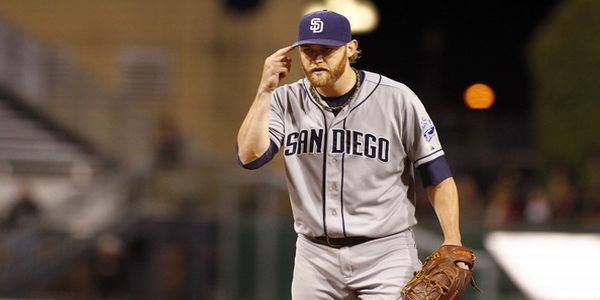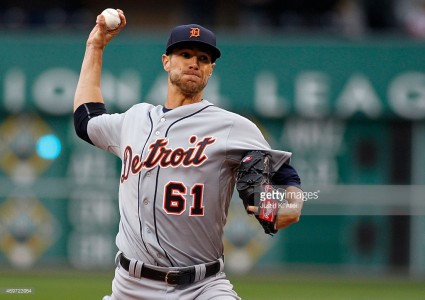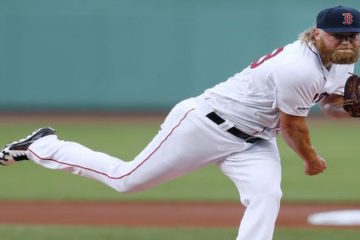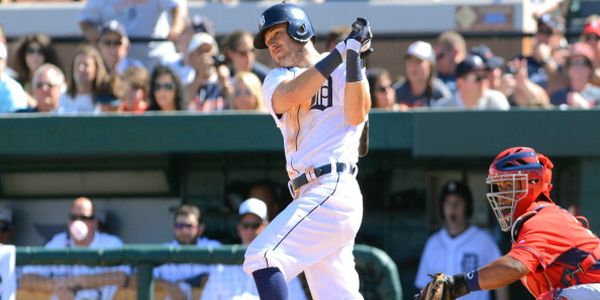2014 Fantasy Baseball: Total Run Index – ADP vs. TRI Starting Pitchers 21-40

The midpoint of the starting pitching universe is probably the biggest key. Most players will get two starting pitchers from the first group of starting pitchers. If you plan your draft right, you can get the rest of your five man rotation from this list of guys. If you can’t get it from this list you can certainly pay attention to who is being under-drafted and stack your rotation with a lot of solid arms. Some players attach their hopes to pitching and they sometimes get burned because their top guy has a bad year. The key is to have five or six solid starting pitchers. That way, if one or two have a bad season you can come back.
BE PREPARED FOR YOUR FANTASY DRAFT, GRAB OUR 2014 FANTASY BASEBALL DRAFT GUIDE!
The key to avoiding the down year is to avoid hype. Yes, you can have a pitcher have a freak injury or suddenly fall off the table, but most of the time, bad seasons are avoidable. Three pitchers on the upcoming list have negative TRI scores. Their 2013 seasons showed some promise, but the key is to ask yourself whether they have turned a corner or simply had an out of context positive season. Others on the list are close to zero despite having quite a bit hype surrounding them.
Sometimes it takes a little studying to find out which pitchers got through their previous season with some luck. Looking at wins and losses is the easy part. When you looking at numbers like batting average on balls in play (BABIP), left on base percentage (LOB%), and the other various batted ball statistics, you can see whether your pitcher really is as good as they say or if he was really lucky. Of course, the flip side is to hitch your wagon to a pitcher that was unlucky last year. Luck has a way of regressing to the mean.
|
POS |
ADP |
Index |
|
| Gio Gonzalez |
21 |
99.26 |
+18.0 |
| Mat Latos |
22 |
102.09 |
+18.1 |
| Mike Minor |
23 |
102.44 |
+4.5 |
| Matt Cain |
24 |
103.23 |
+14.7 |
| Homer Bailey |
25 |
110.74 |
+10.5 |
| Alex Cobb |
26 |
116.79 |
+5.4 |
| Kris Medlen |
27 |
118.40 |
+8.4 |
| Shelby Miller |
28 |
118.63 |
+3.4 |
| Matt Moore |
29 |
119.28 |
+4.1 |
| Julio Teheran |
30 |
127.19 |
-2.7 |
| Masahiro Tanaka |
31 |
136.51 |
N/A |
| Jered Weaver |
32 |
138.19 |
+24.1 |
| Danny Salazar |
33 |
138.35 |
+0.7 |
| Tony Cingrani |
34 |
150.86 |
-3.2 |
| Hyun Jin Ryu |
35 |
152.93 |
+14.6 |
| Andrew Cashner |
36 |
158.72 |
-2.6 |
| Francisco Liriano |
37 |
163.40 |
+8.8 |
| Patrick Corbin |
38 |
169.65 |
+7.7 |
| Jon Lester |
39 |
172.19 |
+18.0 |
| Doug Fister |
40 |
175.37 |
+26.4 |
TRI Potential Bargains
Jered Weaver— Los Angeles Angels
You gotta be careful on how high you put Weaver. There is a reason why he is falling in drafts. I just happen to think he is falling too far. His average fastball velocity has dipped in each of the past four seasons. It has gone from a fairly healthy 90.1 to a paltry 86.8. We can wax on about how important it is to throw hard, but that isn’t really the issue. The issue is that the gap between his fastball and his breaking pitches is shrinking. Therefore, it is more difficult to fool the hitter and get swings and misses.
Therefore, the contact rates against Weaver have steadily risen since that 2010 season. He had a 75.4 percent contact rate in 2010, but that ballooned as high as 80.5 percent contact rate in 2012. Weaver has good fielders behind him and generally has a low walk rate (between 2.14 and 2.17 per nine innings the past four seasons). That combination will make him a good pitcher even if his stuff dictates that he will never be great again.
Doug Fister— Washington Nationals
Sometimes the fancy numbers need to be set aside and we have to move on with some old-fashioned logic and reason. Fister has been very good to great in each of the past three seasons when healthy. He is moving to a better league for pitching numbers, the ballpark will be better for him, and the Nationals have one of the deepest bullpens in the National League. So, you could definitely argue that he is in a better situation than he was in Detroit. Yet, he is being picked on an average of 40th among starting pitchers. It just doesn’t make sense.
TRI Overrvalued Pitchers
Tony Cingrani— Cincinnati Reds
Part of Cingrani’s negative TRI rating comes from the cup of coffee he had in 2012. So, in order to be perfectly fair let’s ignore that season of focus totally on 2013. On the positive end, he struck out nearly 11 hitters per nine innings. If he can get to 180 innings in 2014, he will be among the league leaders in strikeouts at that rate. He also walked 3.70 hitters per nine innings and had an uncharacteristically high 82.1 left on base percentage. Most pitchers carry a percentage somewhere between 70 and 75 percent.
Carrying a relatively high walk rate means you will have more base runners. If more of those base runners are destined to score then you end up with a higher ERA. His FIP, xFIP, and SIERA were all higher than his ERA. His 3.39 SIERA was closest to his final ERA (2.92) but it shows that there is still a bit of a gap between where Cingrani finished and where he probably will be this next season. He’s still a very interesting fantasy prospect, but he’s not the fantasy stud that some people think he is.
Andrew Cashner— San Diego Padres
Cashner is a fellow Horned Frog, so it’s difficult putting him on a list like this, but I’m a slave to science. Cashner has proven thoroughly that he can get big league hitters out. He has electric stuff that has served him in the rotation and the bullpen alike. The problem has been that he hasn’t been able to stay on the mound. He reached 175 innings this past season. He hadn’t even reached 50 in any previous season. For his sake I hope I’m wrong, but I’m just not sure how likely it is that he will go through another season healthy.





